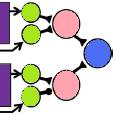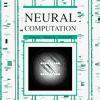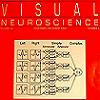Last weeks debugging finally came to fruition on Friday, with Jenny and myself knocking our brains together for the past 3 days and coming up with the solution to the problem. After altering the viewing frustum using some mathematics and then changing the code with loading identity matrices and rendering the texture we got a perfectly lined up, textured, solid cube in openGL which mapped perfectly onto the points already worked out previously using vector mathematics and trigonometry. So the next step (which is going to be the majority of this weeks work) is to implement it into a matlab program to allow it to be ran and the experiment to be done and recorded. Some images of the cube lined up against a perspex proof are shown here. We put the coordinates of one of the faces in at a funny angle of both rotation about the perspex and the table, calculate the coordinates in world space (in cm) and put them into the code. Open GL recreates the same points perfectly on the screen for the viewpoint. A laser was used to make sure the origin was lined up correctly on the screen (you can see the red laser crosshair on the chinrest on one of the photos) and a laser distance measurer was used to judge the distance from the screen.
This week I am also submitting an abstract to NEPG, which is the North East Postgraduate Conference, a coming together of many northern universities (from Edinburgh to Leeds) to present data and information. I hope to be given a spot to present in, or a poster place. Either way it’s an exciting prospect to hopefully present up here for my peers to see what it is that I am doing. Regardless of acceptance or not I look forward to seeing other works and attending talks.
To finish off the week I am giving a talk in Leicester on Friday titled ‘an illusion using 3D technology’. Which will be my first time presenting my data to anybody. While I am not in any way nervous yet I imagine I will be come 9:15 when I open the talks of the day as the first speaker. Wish me luck!




















